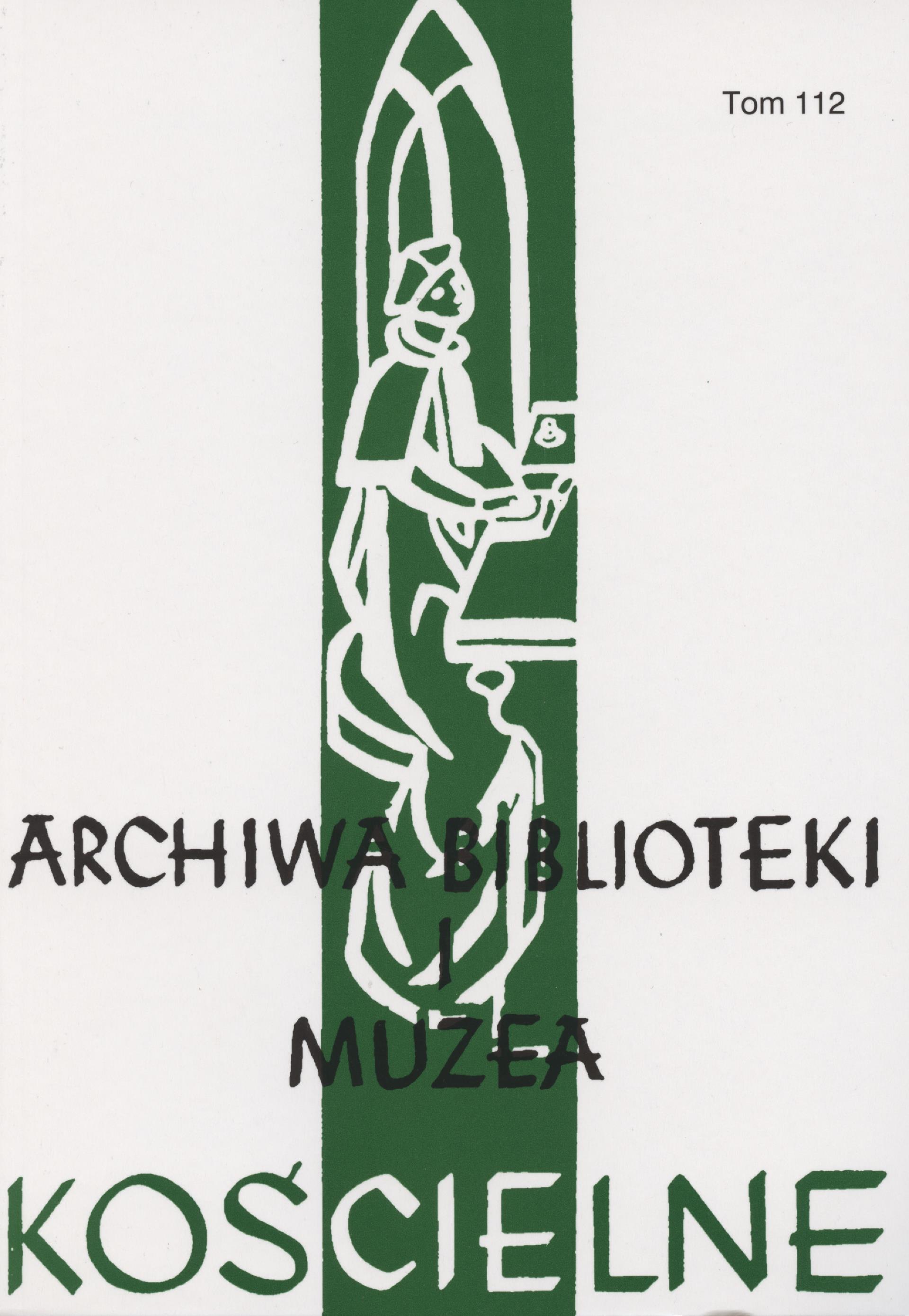Kościoły i zabudowania parafialne w Konopnicy w XVII-XX wieku
Churches and parish buildings in Konopnica from the seventeenth to the twentieth century
Author(s): Artur Paweł Hamryszczak, Hubert MącikSubject(s): Language and Literature Studies, General Reference Works, Library and Information Science, Theology and Religion
Published by: Katolicki Uniwersytet Lubelski Jana Pawła II - Wydział Teologii
Keywords: Pietà; the parish of Konopnica; the archdeaconry of Lublin; Władysław Sienicki
Summary/Abstract: The parish of Konopnica in the Lublin district and the archdeaconry of Lublin dates back to the fourteenth century. It encompassed three villages located next to each other: Konopnica, Radawiec and Uniszowice. At the end of the eighteenth century the parish already had six villages, apart from the above-mentioned ones, Radawczyk, Motycz and Sporniak. It was not until the interwar period that the parish borders were changed; the parish of Motycz was established at the time.The church was endowed by the authorities of the city of Lublin in 1428. The oldest wooden St Catherine’s church was replaced with a stone church, built on a headland protruding into the river valley and consecrated in 1667. At that time the church was dedicated to the Assumption of the Blessed Virgin Mary, as well as St Catherine.The neo-Gothic church, designed by Władysław Siennicki and erected in 1904-1906, took the place of the one from the seventeenth century (it was, however, built on a different site from the previous one). The church serves its functions to this day. The decision to build a new church was prompted by an increasing number of parish inhabitants, the poor technical condition of the existing church, and the project of the Kraśnik road, which became the main road from Lublin to Kraśnik. After the new church had been built, the old church of the seventeenth century fell into oblivion and was demolished in the interwar years.The Konopnica church boasted a sculpture of a Gothic Pietà, which is currently held at the National Museum in Poznań. The sculpture, placed in the high altar, was considered to be miraculous and was worshipped by the local population. Every year on the feast of the Seven Sorrows of Mary (the Friday before Palm Sunday), the Blessed Sacrament was exposed following the celebration of holy mass, during which the faithful were granted an indulgence. The condition of the parish and the church in Konopnica was described in detail in canonical visitation records. In addition to the church, the parish possessed a presbytery, flats for church servants, a hospital, and outbuildings, such as a coach house, a stable, a pigsty, a granary, and a brewery. The new parish cemetery, which replaced the cemetery located near the church, was opened in the early nineteenth century and is currently in the national register of historic monuments.
Journal: Archiwa, Biblioteki i Muzea Kościelne
- Issue Year: 2019
- Issue No: 112
- Page Range: 167-198
- Page Count: 32
- Language: Polish

